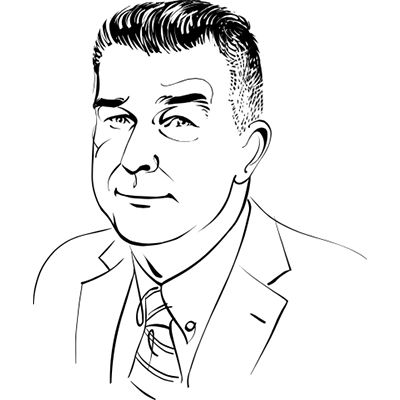Durvalumab Demonstrates Durable Responses in Recurrent GBM
Findings from a recent phase II study showed the PD-L1 inhibitor durvalumab generated durable responses in bevacizumab-naïve patients with recurrent glioblastoma multiforme (GBM).
David Reardon, MD

David Reardon, MD
Findings from a recent phase II study showed the PD-L1 inhibitor durvalumab generated durable responses in bevacizumab-naïve patients with recurrent glioblastoma multiforme (GBM). Findings of the study were presented at the 2016 Society for Neuro-Oncology Annual Meeting.
In a 30-patient cohort, the 6-month progression-free survival (PFS) rate was 20.0% (6 patients; 90% CI, 9.7-33.0). The median PFS was 13.9 weeks (95% CI, 8.1-24.0). Of these 6 patients, 3 had wild-typeIDH1status and 3 had mutatedIDH1.
“Among the 6 patients who were progression-free at 6 months, 5 of them remained progression-free for more than 1 year, while 1 patient was ongoing at 48 weeks,” said lead author David A. Reardon, MD, Dana-Farber Cancer Institute.
Overall best responses were partial response in 4 patients (13.3%) and stable disease in 14 patients (46.7%) for a disease control rate of 60.0% (18 patients). The median overall survival (OS) was 28.9 weeks (95% CI, 22.9 to not estimated). The 6-month OS rate was 59.0% (90% CI, 42.6-72.2) and the 12-month OS rate was 44.4% (90% CI, 28.9-58.9).
This ongoing phase II, multicenter, open-label study has 3 patient populations: newly diagnosed patients with GBM with unmethylatedMGMTpromoter (n = 37), recurrent GBM that is bevacizumab-naïve, and recurrent GBM that is bevacizumab-refractory (n = 17). The bevacizumab-naïve population is divided into 3 groups based on concomitant therapy: no bevacizumab (n = 30), bevacizumab at 10 mg/kg once every 2 weeks (n = 32), and bevacizumab at 3 mg/kg every 2 weeks (n = 32).
This presentation focused on the 30 patients receiving no concomitant bevacizumab. These patients were treated with single-agent durvalumab at 10 mg/kg IV every 2 weeks for up to 12 months. The primary efficacy endpoint for this cohort was PFS at 6 months (PFS-6) and the historical benchmark of PFS-6 of 10% was used, based on historical data from the pre-bevacizumab era. The 30-patient intent-to-treat population included patients who received any dose of durvalumab and had at least 1 baseline and 1 post-baseline tumor assessment.
The first patient was dosed on March 5, 2015, and the data cutoff for this presentation was June 30, 2016. Durvalumab was discontinued by 25 patients (80.6%): 1 for adverse event (3.2%), 2 for physician decision (6.5%), and 22 for progressive disease (71.0%).
The safety analysis set of patients (n = 31) had a median age of 54.0 years (range, 24-77) and was 83.9% male. Measurable lesions at baseline occurred in 24 patients (77.4%). At treatment initiation, 9 patients (29.0%) were on steroids for GBM. The methylation status ofMGMTwas methylated for 9 patients (29.0%), unmethylated for 15 (48.4%), and unknown for 7 (22.6%). TheIDH1gene was mutated in 4 patients (12.9%), wild-type in 22 (71.0%), and unknown in 5 (16.1%). The median time from GBM diagnosis to enrollment was 40.3 weeks (range, 1.9-123.4). Prior to enrollment, 25 patients (80.6%) had 1 relapse and 6 patients (19.4%) had 2 relapses.
The median duration of exposure to durvalumab was 11.1 weeks (range, 0-60), and the median number of doses was 6.0 (range, 1-29).
No grade 4 or 5 treatment-related adverse events (TRAEs) occurred among the 31 patients in this safety analysis set. Additionally, no significant immune-related toxicities or clinically significant laboratory trends were noted. Among non-neurological TRAEs, the only grade 3 event reported was 1 patient with decreased lymphocyte count. Among neurological TRAEs, 1 patient experienced grade 3 headache and 1 patient experienced grade 3 dizziness.
Durvalumab is a human IgG monoclonal antibody that binds to PD-1 and CD80, allowing T cells to recognize and kills tumor cells without the need for cytotoxic activity that is antibody-dependent and cell-mediated. PD-1 is expressed by many lymphocytes that infiltrate GBM, and its ligand, PD-L1, is expressed by 61% to 100% of GBM tumors. The transcription and expression of PD-L1 in GBM is increased when the PTEN suppressor gene is lost, which occurs in 40% to 50% of GBM tumors.
In his concluding remarks, Reardon said that pending analyses are evaluating immunocorrelative biomarkers, and that the data he discussed warrant additional studies of durvalumab in GBM.
Reference:
Reardon DA, Kaley T, Dietrich J, et al. Phase 2 study to evaluate the clinical efficacy and safety of MEDI4736 (durvalumab [DUR]) in patients with glioblastoma (GBM): results for cohort B (CUR monotherapy), bevacizumab (BEV) naïve patients with recurrent GBM. Presented at 2016 SNO Annual Meeting; November 17-20, 2016; Scottsdale, Arizona. Abstract ATIM-04.
FDA Approves FoundationOne CDx as Companion Diagnostic for Tovorafenib in Pediatric Low-Grade Glioma
January 17th 2025FoundationOne CDx is now FDA-approved as the first companion diagnostic for tovorafenib, enabling targeted treatment for relapsed/refractory pediatric low-grade glioma with BRAF mutations or rearrangements.
Read More